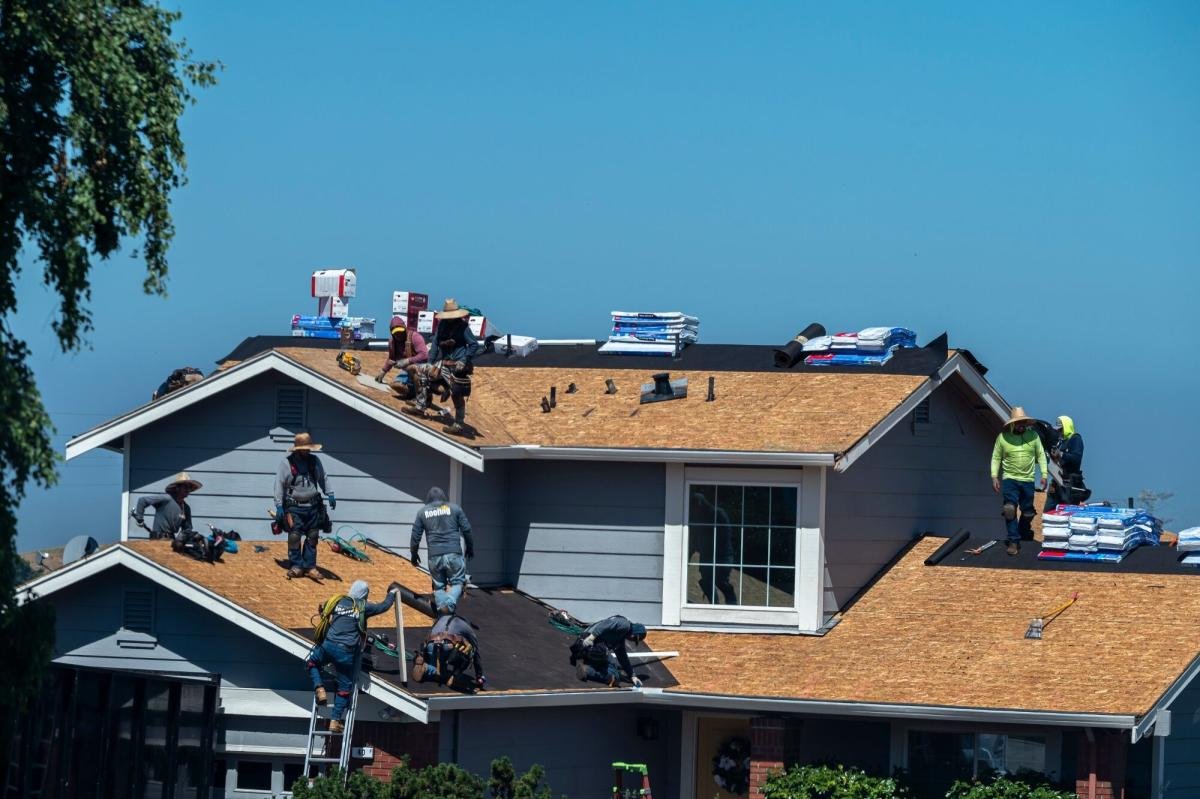
(Bloomberg) — U.S. new home construction fell to the slowest pace in four years in May as longer-term interest rates undermine the housing sector’s momentum from earlier this year.
Most read from Bloomberg
The number of housing projects fell 5.5% to 1.28 million on an annual basis last month, according to government data released Thursday. This figure was lower than all but one estimate in a Bloomberg survey of economists.
Building permits, which indicate future construction, fell 3.8% to 1.39 million year-over-year, also the weakest since June 2020. The declines in starts and permits were broad across both multifamily and single-family properties. The number of permits granted for single-family homes fell for the fourth month in a row, to the slowest pace in a year.
The decline in housing construction suggests that housing construction may be hurting economic growth after stabilizing earlier this year. Before the report, the Federal Reserve Bank of Atlanta’s GDPNow forecast found that this category would contribute little to gross domestic product in the current quarter.
“The US housing market’s weakest start since the pandemic-induced shutdowns provides fairly compelling evidence of restrictive monetary policy,” Sal Guatieri, senior economist at BMO Capital Markets, said in a note. “While a growing population and workforce provide some support, U.S. homebuilders won’t get busier until financing costs fall.”
Recent data indicating that inflation and consumer spending are slowing should give the Fed more confidence to cut rates, which will also lower mortgage rates. Yet the US still faces a massive housing shortage, keeping prices high and leaving many Americans unable to own their own home.
Major homebuilders, including Lennar Corp. and KB Home, have tried to offset high rates with generous sales incentives, which has helped drive demand. Still, the companies have managed to maintain healthy margins, which executives say could rise even further if a lower tariff environment allows them to cut concessions.
The construction sector fell in three regions, led by a 19% slump in the Midwest. Although construction activity has increased in the West, the pace is still slower than most of last year.
Home completions also fell. The number of multifamily projects already under construction fell to the lowest since September 2022, while single-family housing was the weakest this year.
Housing market starts figures are volatile, with the government report showing 90% confident the monthly change ranged from a 3.9% decline to a 14.9% gain.
Separate data on Thursday showed initial claims for U.S. unemployment benefits fell slightly last week from a 10-month high in the previous period. Continuing claims, a measure of the number of people receiving unemployment benefits, rose for the seventh straight week.
—With help from Chris Middleton.
(Adds unemployment claims data in final paragraph. An earlier version of the story corrected third paragraph to restore “million.”)
Most read from Bloomberg Businessweek
©2024 BloombergLP


